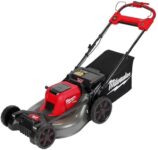
Milwaukee Lawn Mower Review – Is the M18 FUEL 21″ Dual-Battery Worth It?
Near‑gas power without the gas — ideal for thick lawns, if the extra weight and battery cost aren’t dealbreakers.
Cutting the lawn shouldn’t mean a trip to the gas can or settling for a weak battery that stalls on thick turf. Homeowners who need consistent torque and longer runtime often find single-battery cordless mowers come up short. Milwaukee’s M18 FUEL 21‑inch dual‑battery mower positions itself as a middle ground — a cordless, self‑propelled machine that aims for near‑gas performance without the fumes and constant maintenance.
It combines a brushless M18 FUEL motor, a dual‑battery architecture for steady power under load, a 21‑inch steel deck, and variable self‑propel to deliver predictable cuts and quieter operation. The trade-offs are straightforward: it’s frequently sold as a bare tool (batteries and charger can add cost), is heavier than many single‑battery options (about 65 lb packaged), and has had some fulfillment hiccups — but for those who prioritize torque and low upkeep, it’s a durable, serviceable alternative to small gas mowers.
M18 Fuel 21" Dual‑Battery Mower
It delivers a strong, predictable cut with the convenience of cordless operation and the torque homeowners want for thicker grass. Battery-only sales and its weight are the main trade-offs, but the overall package is a durable, serviceable alternative to small gas mowers.
Top Battery-Powered Mower: Milwaukee M18 FUEL 21″ Self-Propelled Dual Battery Review
Overview
The mower positions a professional-grade cordless platform in the homeowner market: a 21-inch steel deck paired with Milwaukee’s M18 FUEL brushless motors and a self‑propelled drive system. It is offered as a bare tool so users already invested in the M18 ecosystem can add batteries they prefer; others will need to budget for high-capacity M18 batteries and a charger. The design focus is torque, reliability, and low maintenance rather than ultralight portability.
Who this mower suits
Key specifications (at a glance)
| Specification | Detail |
|---|---|
| Cutting width | 21 inches (steel deck) |
| Drive | Self-propelled variable speed |
| Platform | Milwaukee M18 FUEL (dual-battery capable) |
| Weight (item) | ~65 pounds (packaged dimensions 40 x 19 x 21 in) |
| Model number | 2823-20 |
What makes the platform different
Milwaukee builds this mower around the M18 FUEL philosophy: brushless motors, optimized gearing, and a system‑level approach that relies on batteries to deliver sustained power. The mower uses two M18 batteries in tandem to increase voltage headroom and thermal stability under load, which translates into consistent blade speed when cutting thicker or wetter grass.
Performance and cutting behavior
Runtime and battery considerations
Runtime will vary significantly with battery capacity, grass type, mowing height, and terrain. In practical backyard tests with higher-capacity M18 packs, many users will get enough runtime to finish a medium lawn on one charge with self‑propel engaged; pairing two high‑capacity batteries increases that margin.
Assembly, setup, and first use
Maintenance and long-term ownership
User experience and ergonomics
Noise, emissions, and environmental impact
What to watch for before buying
Comparison pointers (how it stacks up)
Buying tips and recommended accessories
Final take
This mower is a sensible step toward electrifying a homeowner’s lawn-care kit without making big sacrifices in cutting performance. It leans into system strength — pairing powerful brushless motors with dual-battery support — and focuses on durable, workmanlike construction. For those already invested in the M18 ecosystem, it’s a straightforward upgrade; for new buyers, the cost of batteries and chargers is the main variable to factor into the long-term value proposition.

FAQ
Many listings sell this model as a bare tool. Buyers should always check the product page and order details to confirm whether batteries and a charger are included. If they are not, plan to purchase two M18 batteries and a compatible charger to get the intended performance.
Runtime depends on battery capacity, grass height, cut setting, and terrain. With two high-capacity M18 batteries, most homeowners can expect enough runtime to finish a medium-sized yard. Larger or hillier properties may need a spare battery or charger to avoid interruptions.
Yes — the dual-battery M18 FUEL setup provides sustained torque under load and holds blade speed better than single-battery systems. However, extremely heavy-duty jobs or very tall, wet grass may still slow progress and reduce runtime compared with shorter, regularly maintained turf.
A steel deck is generally more durable and better at holding its shape after impacts and heavy use than many polymer decks. It may require occasional rust prevention attention in damp climates but gives a more consistent cut pattern over time.
Yes — electric mowers remove many gas-engine chores like oil changes and carburetor work. Routine maintenance centers on blade sharpening, deck cleaning, and basic inspection of drive and fasteners. Batteries require manufacturer-recommended storage and charging practices.
Mowing modes depend on the specific configuration and accessories. Users should check whether the purchase includes a bag or mulching plug; many owners add a compatible bag attachment or mulching kit if they want to change how clippings are handled.
Yes — existing Milwaukee M18 batteries will work in this mower. For best performance, use two matched batteries of the same model and similar state of charge to maximize runtime and power consistency.
Milwaukee’s M18 FUEL battery-powered mower delivers equal or superior torque, faster throttle response, excellent cut quality, and enhanced usability compared to a typical 200cc gas-powered mower. It also offers benefits like being quieter, fume-free, and low maintenance. However, battery runtime and long-term durability in demanding conditions remain areas to monitor, and gas mowers still hold advantages in raw continuous power and extended runtime in some scenarios.



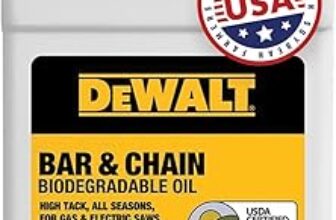
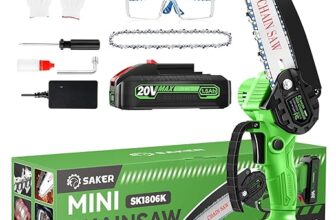
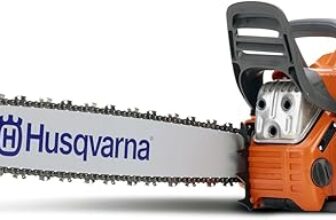
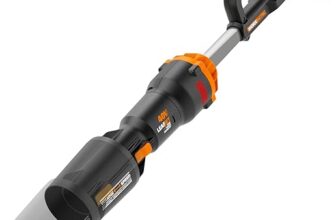

Weight comment: 65 lbs is listed — that’s considerably heavier than many push mowers. If you have storage space limitations or need to load it in a car often, plan accordingly.
Also, the 21″ deck is a sweet spot for maneuverability vs. speed. I liked that part of the review.
Good practical note, Michael. The review’s mention of weight as a trade-off is worth remembering for anyone who needs to lift or transport the mower frequently.
If you need to lift it into a pickup, get some help or a ramp. It’s doable but awkward solo.
Price is my main hesitation. $818.52 plus batteries could be $1,100+ total. For that price I expect long-term reliability.
Could someone compare total cost of ownership vs. a small gas mower over 5 years? Batteries aside, do maintenance costs make cordless cheaper or more expensive over time?
Fair concern. Over 5 years, cordless can save money on fuel and routine gas-engine maintenance (oil changes, spark plugs). Battery replacement and higher upfront cost can offset that. If you already own M18 batteries, the math often favors cordless. If not, factor in battery replacement every few years depending on usage.
I did rough math: after buying two good batteries, I was close to break-even with gas after ~3–5 years, depending on how often I mow and gas prices.
I don’t miss gas smell or pull-starts. For me the convenience is worth the extra upfront cost.
Love the idea of cordless power, hate the weight. 65 pounds? Oof. That’s like dragging a small pet around the yard. 😂
Seriously, does anyone think this replaces a small gas mower for most homeowners?
The review positions it as a durable, serviceable alternative to small gas mowers for homeowners who want cordless convenience. The trade-offs are battery cost and weight, but the torque and cut quality make it a viable gas replacement for many.
Long-time mower skeptic here — I didn’t think cordless would cut it, literally. After reading this review I’m intrigued.
Pros that stood out to me:
– Dual-battery option for extended runtime
– 21″ deck is a good size for suburban yards
– 8.3 expert rating seems fair
Cons:
– Price is steep ($818.52)
– Battery-only sales (meaning batteries sold separately?) — can get expensive
Would love a realistic runtime estimate with two packs. The review didn’t get into actual minutes per charge for average grass height.
Good summary, James. The batteries are often sold separately with Milwaukee (model 2823-20 is tool-only), so factor in at least one or two M18 FUEL batteries if you don’t already have them. Runtime varies a lot with grass height and battery capacity, but expect 30–60 minutes per 9.0Ah pack under moderate conditions; that’s why dual-battery is useful.
Runtime also depends on blade height and if you’re mulching vs side-discharge. For dense/thick grass you’ll see shorter times.
If you’re counting dollars, factor in batteries: two 9Ah packs add a few hundred bucks. Still less messy than gas though 😉
I have two 9Ah packs — I get around 40-50 minutes per pack on medium grass. Dual setup gave me a full yard with a little left over.
Technical question: The review mentions torque for thicker grass — does anyone know the mower’s peak power draw or whether it reduces speed under load? Trying to understand if it throttles like some brushless systems.
If you want raw numbers, reach out to Milwaukee support — they sometimes provide motor specs for pro models.
I noticed it bogs less than my old battery mower. It’s not gas-tractor power, but it’s impressive for a cordless unit.
Milwaukee’s FUEL line uses brushless motors and advanced electronics so it maintains torque better under load than many mid-range cordless motors. Exact peak wattage wasn’t listed in the review, but the system is designed to prevent significant bogging when cutting thick grass.
It does slow a bit on very tall/wet grass, but not dramatically. The self-propelled drive helps keep forward motion even when the blade works harder.
Thanks — that explains the practical experience vs. spec numbers.
Bought mine after reading a similar review. It’s been fantastic for my 0.3-acre yard. Cuts clean, less vibration than my old gas mower, and I enjoy the quiet mornings.
Two replies:
– Batteries are indeed sold separately. I bought two M18 9.0Ah packs and they lasted about 45 minutes each on my lawn.
– Assembly was easy — only took 20 minutes.
Highly recommend if you can swing the price.
Thanks for sharing your firsthand experience, Priya. That usage aligns with the reviewer’s note about torque and predictable cut.
Thanks — that runtime estimate is exactly what I needed to hear.
A few lines from my experience — long post:
I rented a Milwaukee M18 battery mower at a rental shop for a weekend to test it on my thicker, clay-heavy lawn. It performed very well, steady cut, and I liked not dealing with gas or starting ropes.
Downsides: it’s heavy to lift for small storage, and I had to charge overnight between uses. If you have large acreage, you’ll want more spare batteries. For a typical suburban yard, though, it’s a very practical swap.
Hope this helps anyone on the fence!
Really helpful field report, Hannah. That rental approach is a great way to test battery mowers before investing in batteries.
Agree — for the price, testing first is smart.
Thanks for the rental tip — I might try that before buying.
Good point about overnight charging. If you mow every day or have a big yard, you’ll need a strategy for charging and cooling.
Looks good but $818.52?! 😳
Might be worth it if I didn’t have to buy batteries separately. Typos in the review aside, glad they tested the cut quality.
Nice review — helped me decide between this and a gas mower. I like that it’s dual-battery and self-propelled. The weight is a bit concerning at 65 lbs, but if it actually handles thick grass like the review says, it might be worth it.
Anyone tried it on hills?
Glad it helped, Emily. The reviewer noted predictable torque for thicker grass; it handles mild slopes OK thanks to the self-propelled system, but very steep hills can be more work due to the weight.
I used it on a 15° slope last week — manageable but you’ll feel the weight. Recommend using good traction tires and take it slow.
If you’re hill-averse, consider a lighter battery-only push mower. This one’s more for folks who want gas-like power without fumes.
I appreciate the honest verdict — ‘battery-only sales and its weight are the main trade-offs.’ I have a couple of points/questions:
1) Serviceability: Does Milwaukee allow easy blade changes and deck maintenance compared to other brands?
2) Parts and repair: Are spare parts readily available, or does this become a problem in a few years?
3) Environmental impact: Battery production is a concern; any thoughts on lifecycle or recycling programs?
Not trying to be negative — just trying to weigh long-term ownership costs.
I’ve replaced a blade and an under-deck belt on a Milwaukee tool before — parts were easy to order online. Not cheap, but doable.
Recycling: check local hazardous waste facilities and big-box stores — they often take lithium packs. Lifecycle-wise, expect a few hundred cycles depending on usage and charger habits.
Good questions. Milwaukee typically designs for serviceability: blade changes are straightforward and the deck is standard-sized. Parts availability is generally good through Milwaukee dealers and Amazon, but prices can be higher than generic brands.
Regarding batteries, Milwaukee participates in some recycling programs; many retailers accept battery recycling. It’s true battery lifecycle and replacement cost are important factors to consider long-term.
Thanks everyone — that helps. I’ll factor in parts and recycling into the total cost of ownership.
Agreed on parts — I like that it’s serviceable, but if you want cheap parts and easy at-home repairs, some older gas mowers still win.
If you like drama: I tried to race my neighbor’s gas mower. Lost. Not because of power — because he cheated with a downhill start. 😂
All jokes aside, this thing seems to be the closest cordless contender to gas. Pricey, but less smelly and fewer tune-ups.
Ha — appreciated. The ‘closest cordless contender’ line mirrors the review’s tone: durable, gas-alternative, with trade-offs.